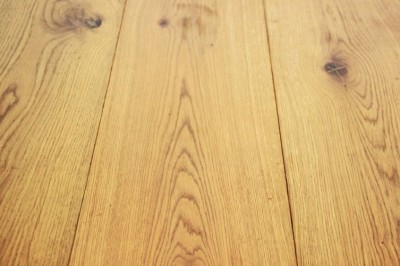My garden care - Cucumber Diseases and Pests
Disease. Fusarium wilt disease. Cucumbers which are grown in greenhouses can fade for many reasons: water scarcity during the growth, too high temperature and intense evaporation, intense temperature fluctuations during day and night, cold water, too high fertilizer rates or too great concentration in chemicals. Very often once normal temperature and humidity conditions are retained, cucumbers recover. The excess of fertilizer can be eliminated by pouring lots of lukewarm water on the roots of plants. Wilt may be infectious in terms of its origin too - fungal and bacterial. Fungal wilt is caused by Agent Green (Fusarium oxysporum Schlecht.). Bacterial wilt is caused by Cyst pseudomonas (Pseudomonas solanacearum).
Poorly ventilated and damp greenhouses often develop the sclerotic rot in them. It is caused by a simple sclerotinia (Sclerotinia sclerotiorum Lib. De baryon). The lower part of the stem of cucumber shoots start to rot and turn brown. Or when it is very wet, rotting parts of the plant encrust with white wool-like mycelium. Later inside or outside the decaying plant develop black, 0.5 - 1 cm cells - sclerotia. Sometimes once the moisture is adjusted there is no white mycelium or sclerotia and damaged parts of the plant rot dry. Diseased plants start to wilt. Cucumber core rot is more commonly found in greenhouses where the soil is not changed or disinfected often enough.
When dealing with the infectious nature of cucumber wilt the main safeguard is the disinfection of greenhouse soil. Withered plants must be uprooted together with the soil which is located on the plant roots. Grubbed plants can not be placed in the compost and must be burnt. Either that or you should dug a hole in a field and throw them out in there, afterwards pouring it with disinfectants and burying. You can plant new cucumbers into the place of the removed ones. If you notice sclerotic rot in plants, damaged areas should be sprinkled slaked lime or wood ashes. If possible, the damaged areas should be cut and disinfected with 0.5% copper sulfate solution. Withered plants should be uprooted carefully in order to avoid scattering of sclerotia. To prevent the spread of rot it is necessary to always regulate the temperature, humidity and the greenhouse ventilation. When watering plants, water should always be poured on the soil rather than directly on plants.
Scurfs. Pathogen - cucumber scab (Cladosporium cu cumerinum Eli. Et Arth.). Most of the damage the disease causes for cucumbers which are grown in polyethylene greenhouses, even though sometimes it can be found in outdoor growing cucumbers too. Pathogen violates cucumber leaves, stalks, stems, fruits (brown spots appear). When the amount of moisture is sufficient, on the surface of stains blackish-green plaque appears. The pathogen - conidia plaque - causes most of the damage for the fruit: it becomes curved, stained with blackish-green arched spots. Spots of conidia can occur on other plants, as water drops (which occur on the top of the plastic greenhouses) splash them around.
The agent winters in crop residues. A collection and disposal of the waste as well as compliance with the rotation, disinfection of greenhouses and soil are some of the most important safeguards. As soon as the first signs of the disease are noticed, spray plants with fungicide, regulate the temperature and humidity.
Bacteriosis. The cause of the disease is Pseudomonas lachrymans (EF Smith and Bryan) Stapp). Bacteriosis is a very common disease among cucumbers both in greenhouses and outdoors. Infected cucumber leaves are initially pale and contain green fatty stains. Those stains later turn brown, become dry and once they come off the leaf remains holey. Similar spots form on cucumber fruit too. They become fragmented in time, and in humid weather the sticky greenish exudates - a mosaic of bacteria - ooze from them. Bacteriosis often develops in conjunction with scurf, which makes spots on the surface turn blackish-greenish.
The disease is spread with the seed as well as with the remains of sick plants. The most reliable measure of protection is a healthy cucumber seed. With the appearance of first symptoms of bacteriosis, cucumbers must be sprayed with fungicides. After harvesting crop residues should be collected and disposed.
Mildew - a very common leaf disease among cucumbers and other Cucurbitaceae family plants. It causes the appearance of powdery mildew (Erysiphe cichoracearum DC ex-Merai) on the plants. The disease causes widespread damage to both field and greenhouse-grown cucumbers. For the protection against mildew preventive measures must be taken: the destruction of plant residues, and the disinfection of greenhouses and soil.
Gray fruit bud rot. Pathogen - Gray Botryotinia (Botrytis cinerea Pers. ex Fr.) May damage any overground parts of the plant, but mostly the rings, stems, and fruit rudiments in particular. Damaged tissues tend to soften, rot and their surface encrusts with the gray cloudy fungal conidia plaque. Later, they form small black sclerotia cells. Disease can be spread from one plant to another with the spread of conidia, which is spread by the air currents, insects or humans. The pathogen winters in soil, and the remains of diseased plants.
For the protection against this disease the humidity in greenhouses must be controlled strictly. Plants should be planted sparsely so that the moisture does not accumulate between them. Infected plant parts should be cut with care (so that the minimum amount of spores is spilled) and burnt down. The soil in which plants used to grow should be either disinfected or replaced. By spraying cucumbers from time to time for the prevention of other diseases, you can protect against gray rot too.
Cucumber mosaic - one of the most important viral diseases of cucumbers. Pathogen - cucumber mosaic virus (Cucurnis virus I (Doolitle) Smith). First symptoms - young leaves mottled in mosaic pattern. Later on symptoms become apparent on older leaves too. Disease damaged fruits are also are mottled with rough, rugged surface. This disease is the reason why many of the plants die (wither), while the remaining ones result in extremely little crop. Cucumber mosaic can be spread among the crop very quickly; by doing various rural chores: trimming cucumber shoots, binding, taking the yield. Various pests can spread the disease too; by sucking the juice from the infected plants and then straight after moving onto the healthy ones. Disease is spread with the seed too.
For the protection against cucumber mosaic only healthy cucumber seed must be sown. Unknown seed should be kept for 3 days at 50 ° C, then 1 day at 80 ° C. In addition, the weeds should be manually rooted out, sudden temperature fluctuations in greenhouses avoided. When doing the maintenance of plants hands and tools must be disinfected, and sick plants removed and destroyed.
Cucumber pests. Red spider mite (red Vorel) (Tetranychus urticae Koch.) - The most dangerous cucumber pest of all. They are small, grey-greenish arachnids which are hardly visible to the naked eye. Wintering female arachnids are orange-red. Live on leaves, usually at the bottom side of them between thin cobwebs. Feed by piercing the epidermis and sucking plant juices. Firstly, they infest lower leaves. Infected places appear to develop small bright spots. When those spots merge, leaves turn pale and wither. Mites are particularly harmful to greenhouse cucumbers, much less to those grown in fields.
Protection measures. After harvest remove plant debris and disinfect empty greenhouses. Sustain optimal temperature in the greenhouse. Relative air humidity must be 80 - 95% as such environmental conditions are unfavorable for the development of spidery mites. The focus of pests must be sprayed with acaroids. Another promising biological method is the use of predatory mites.
--
Garden care, gardening




















